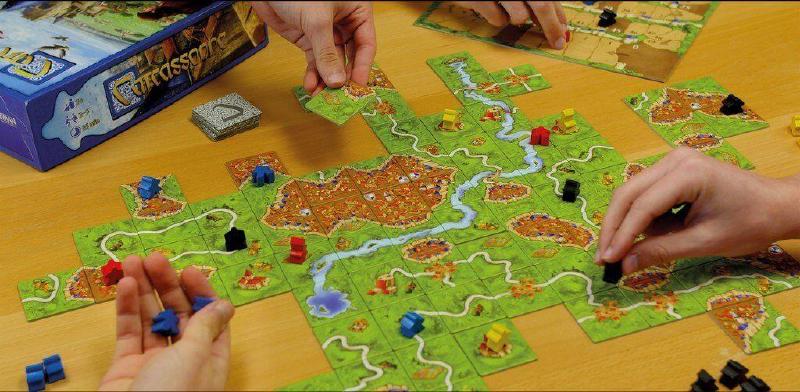Workflow is pervasive. Everyone who is doing a job - from making a tea to crafting a nuclear reactor - is doing workflow. Engineering sizable workflow in an efficient manner is not an easy task, as there are many hidden pitfalls and appealing biases we should be aware of. Leveraging Carcassonne, a famous tile-based board game, we can materialize one of them, namely the factory and library duality, but also complementarity.
Carcassonne core gameplay is based upon tiles players can arrange to shape paths and cities. Of course, linking tiles obeys boundary rules. In a way, by doing so, we are building kind of workflow…
Tile factory mindset
Build a workflow assuming we can craft tiles the way we want, acting as both tile provider and consumer.
Where everything started:

| Pros | Cons |
|---|---|
| No limitation (ideal world, of course) | Blank page syndrome |
| Tailored experience | Poor reusability if not taken carefully |
| Not scalable |
Tile library mindset
Build a workflow assuming we leverage existing and well-known on the shelf pieces, acting as tile consumer.
Tiles collection part of the game base version:

| Pros | Cons |
|---|---|
| Knowledge of pieces | Limited set of pieces may curb outcome |
| Reusability | Does workflow we end up with match initial requirements or do we reshape requirements to match pieces we have? |
Pragmatic mindset
Materializing both ends of the spectrum is a good way to grasp problem space boundary. As always, smart answers do not lie in the extremes. You are likely to end up with an hybrid approach, smartly opting for the contextually best option between factory and library, more than likely mixing both approaches along the way.
Mischievous minds could argue opting for library only approach could be difficult when we do not have this amount of on the shelf tiles to serve, therefore boosting the probability to break the requirement matching guideline. On the other hand, factory afficionados may experience scaling pain as crafting and maintaining a sizable bunch of tiles comes with a strong prerequisite, namely to be able to deliver a couple of sustainable ones. Which is a sizable yard on its own. And a yard that most of us are still experimenting…
Closing
Leveraging an 8 years and up board game is a very effective way to popularize cognitive biases.
It highlights how:
- Players who stick to library approach may end up with curbed outcome.
- Players who stick to factory approach may end up with out-of-control or inoperable outcome.
That’s for the duality trait.
Of course, nothing is frozen as:
- Library can be expanded through extensions, and thus outcome possibilities enriched. Carcassonne has been extended via 10+ extensions, widening gameplay possibilities.
- Factory can be streamlined, acting as breeding ground for above extensions. Each Carcassonne extension has been considered and supplements gameplay in a unique fashion.
That’s for the complementary trait.
